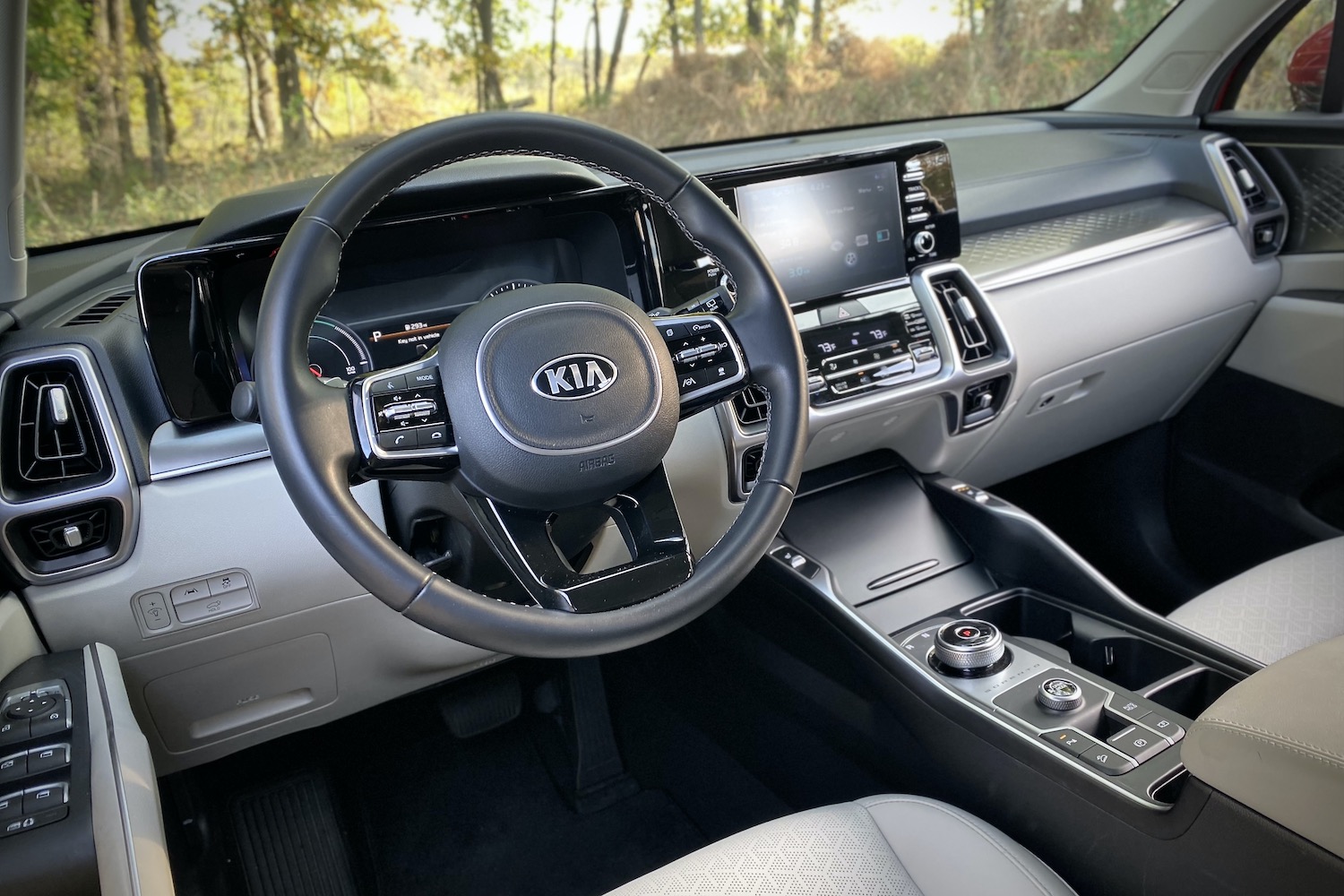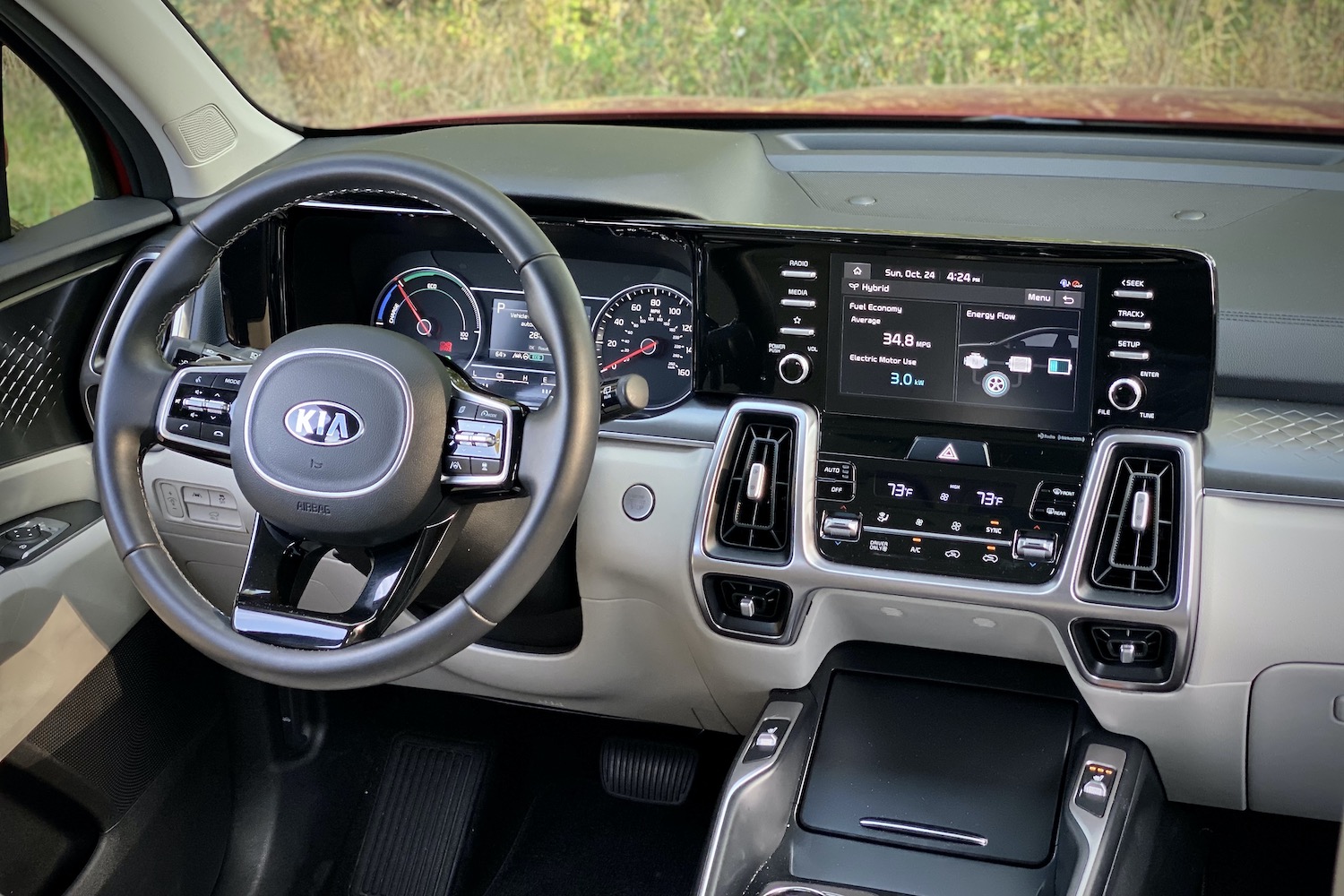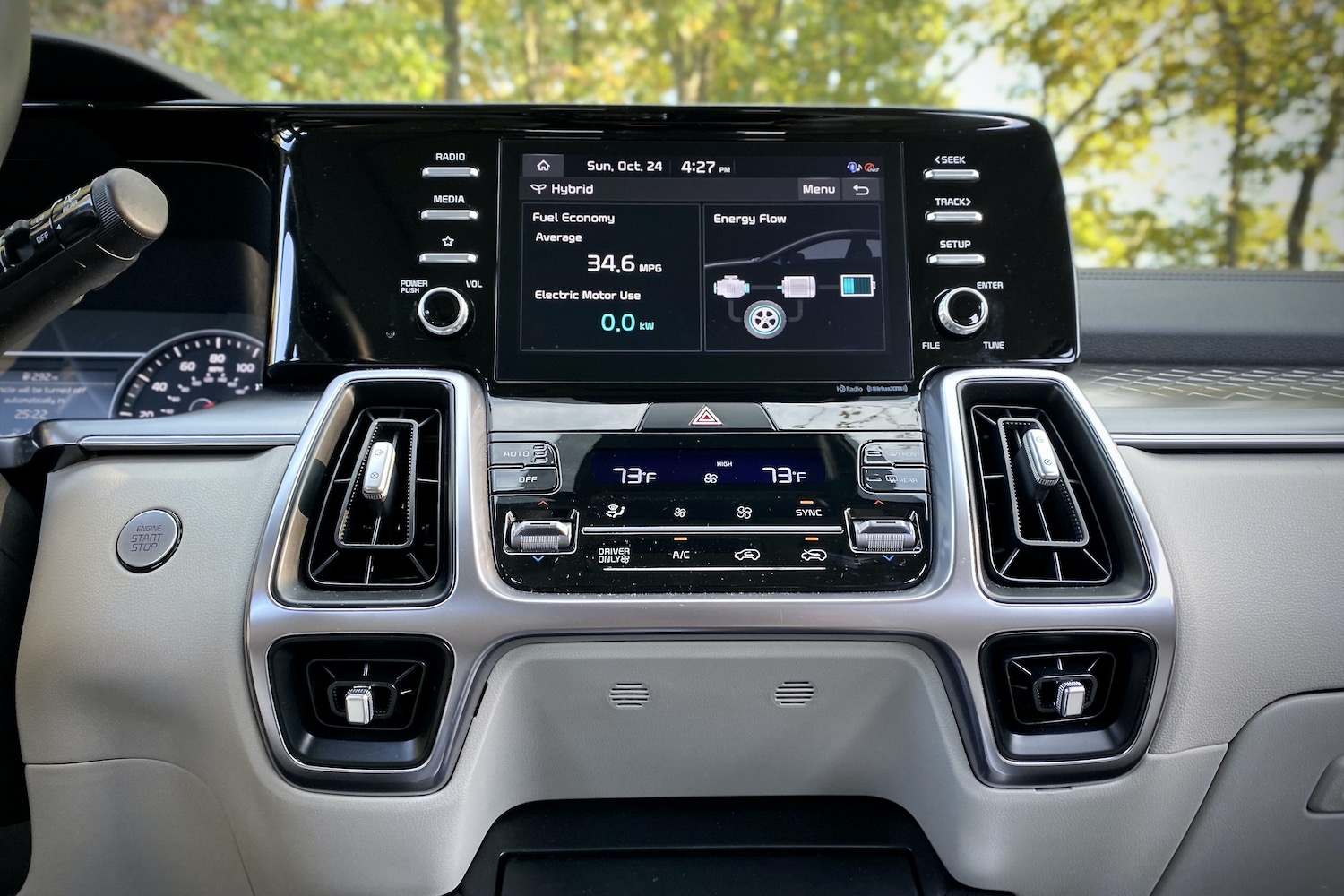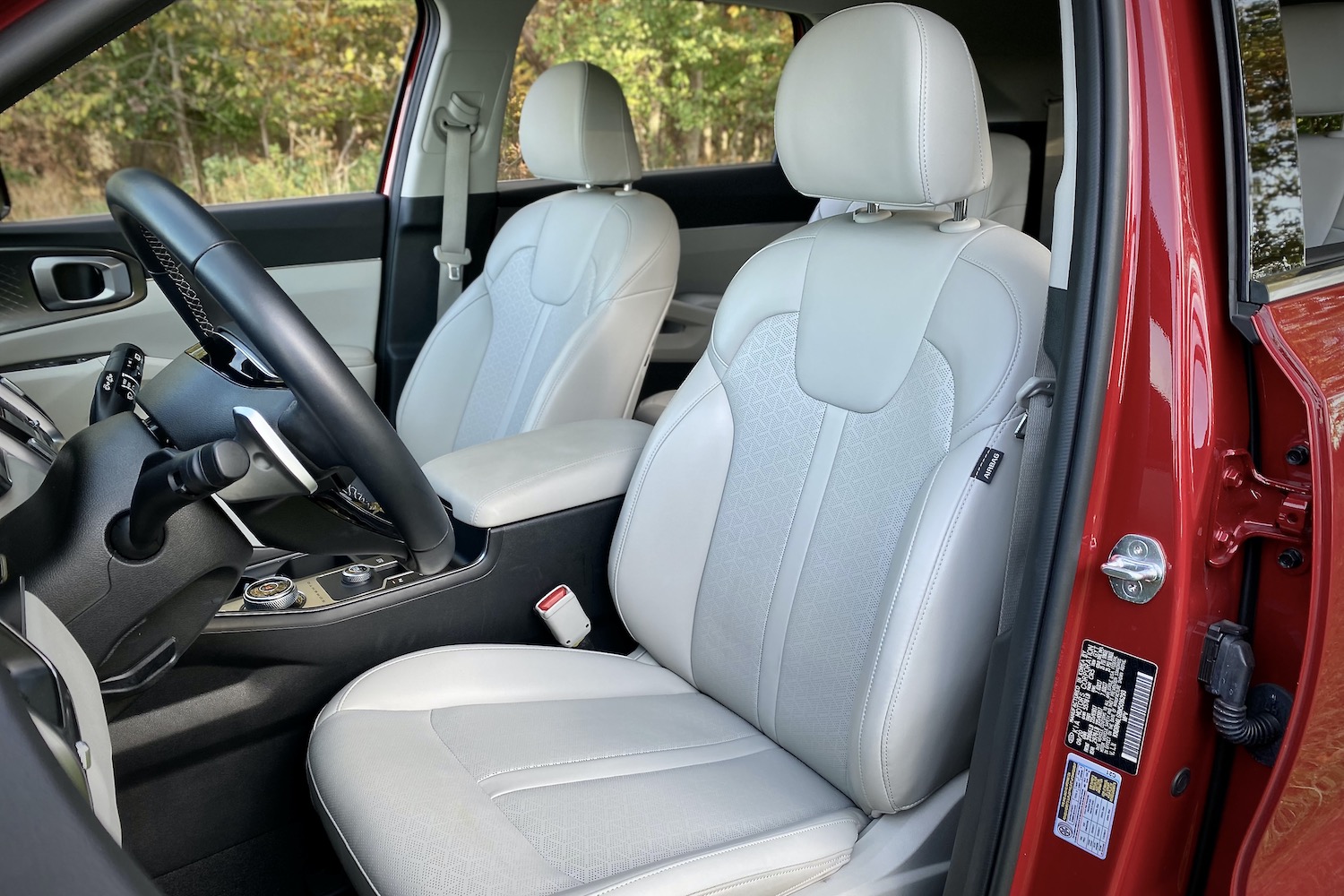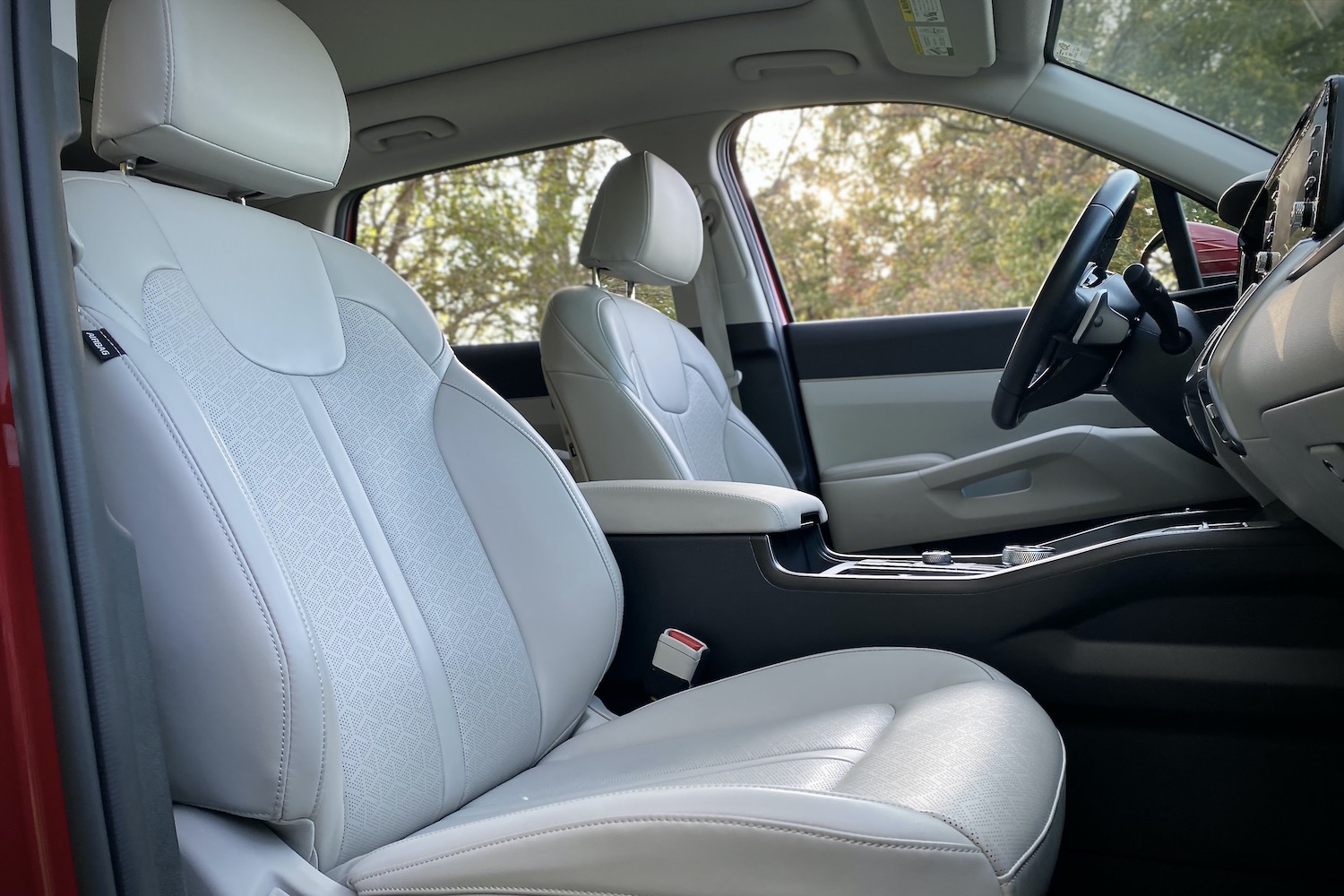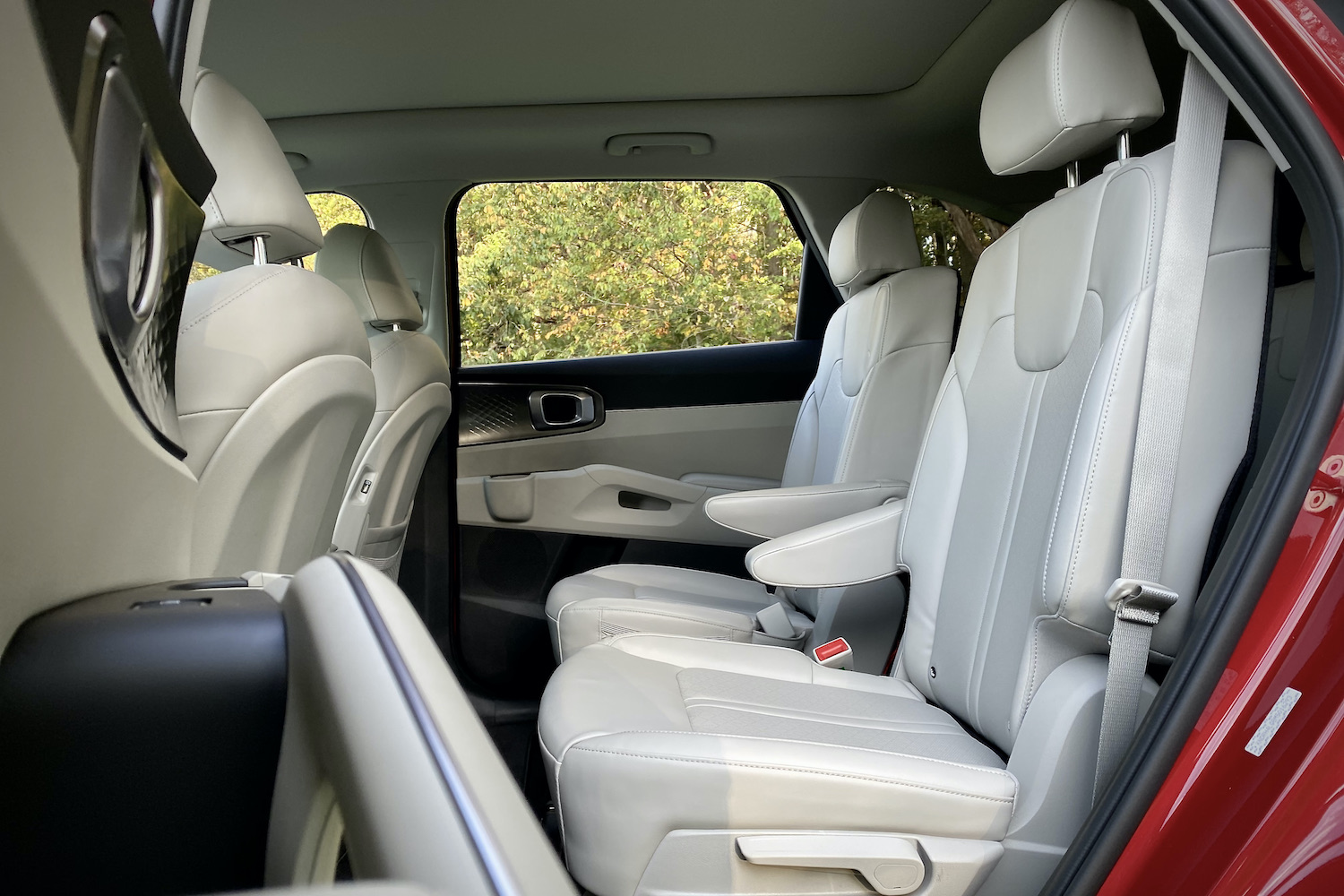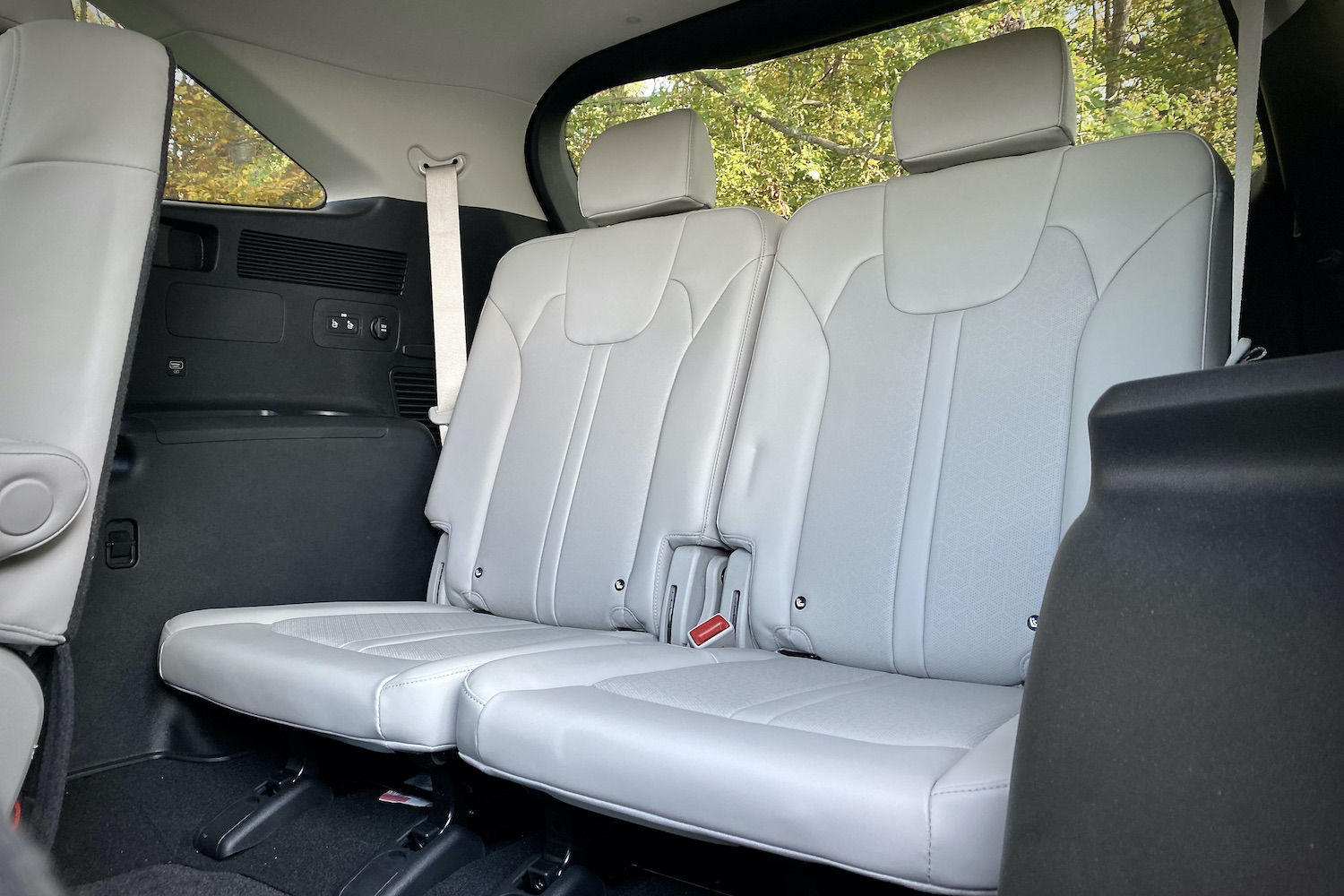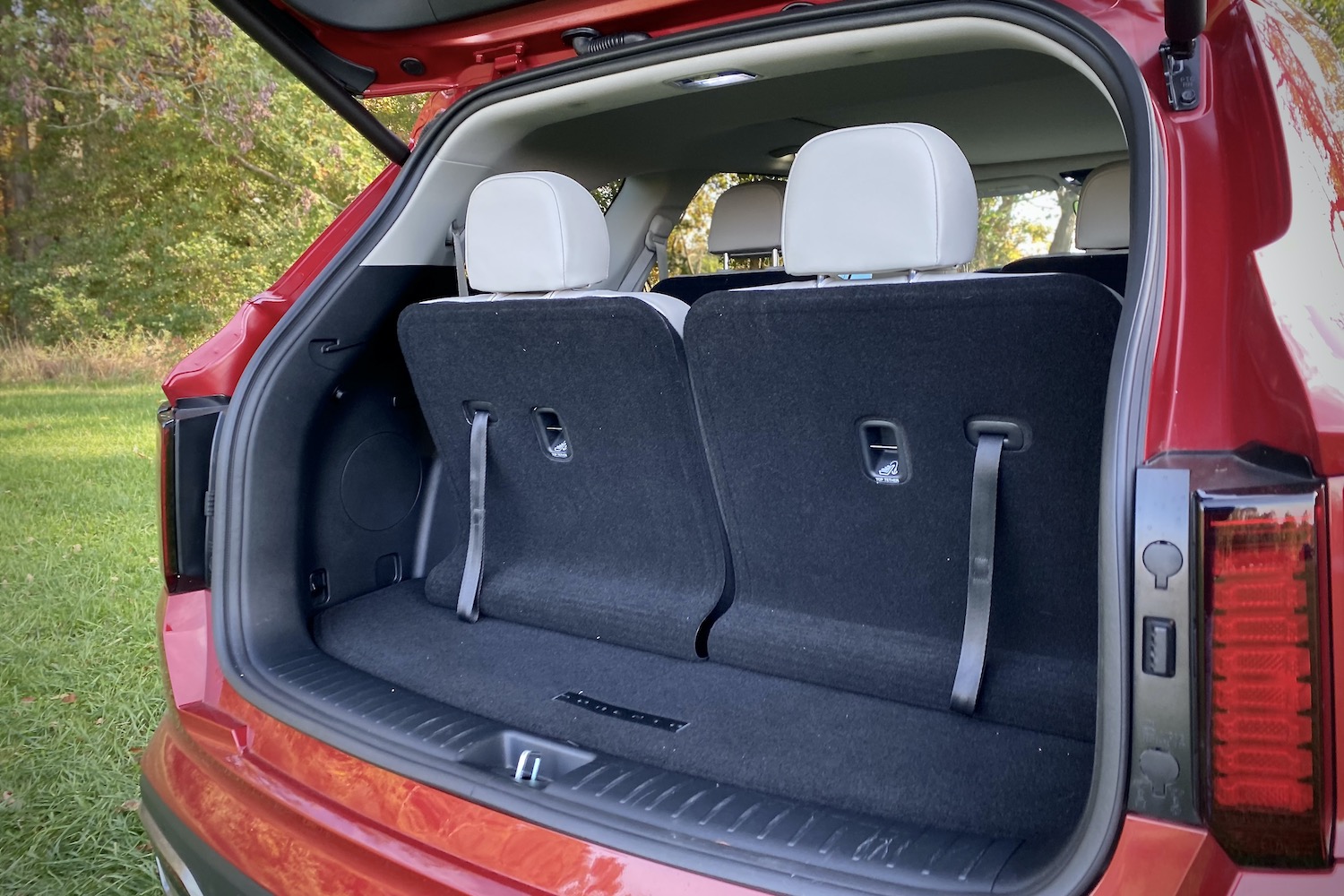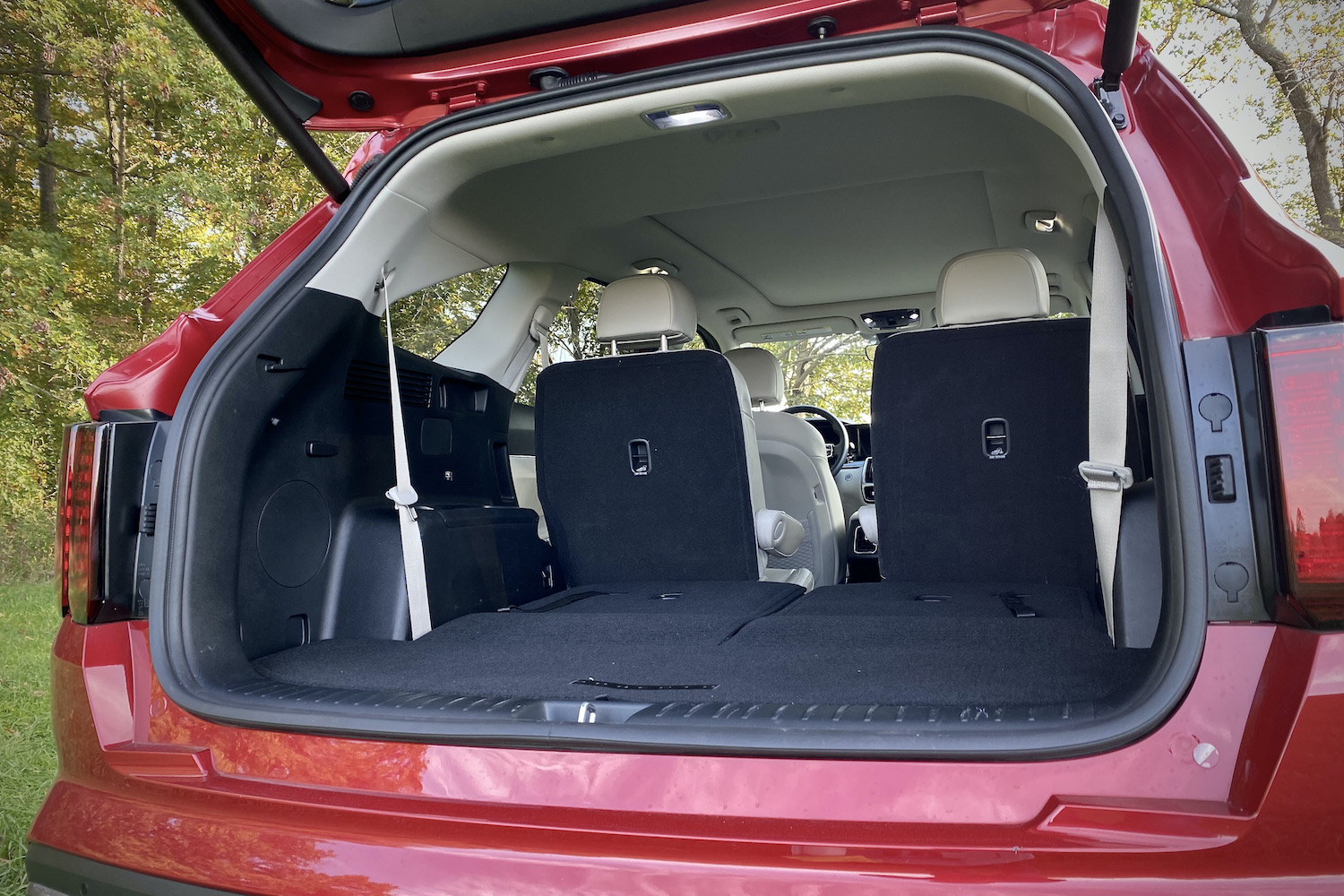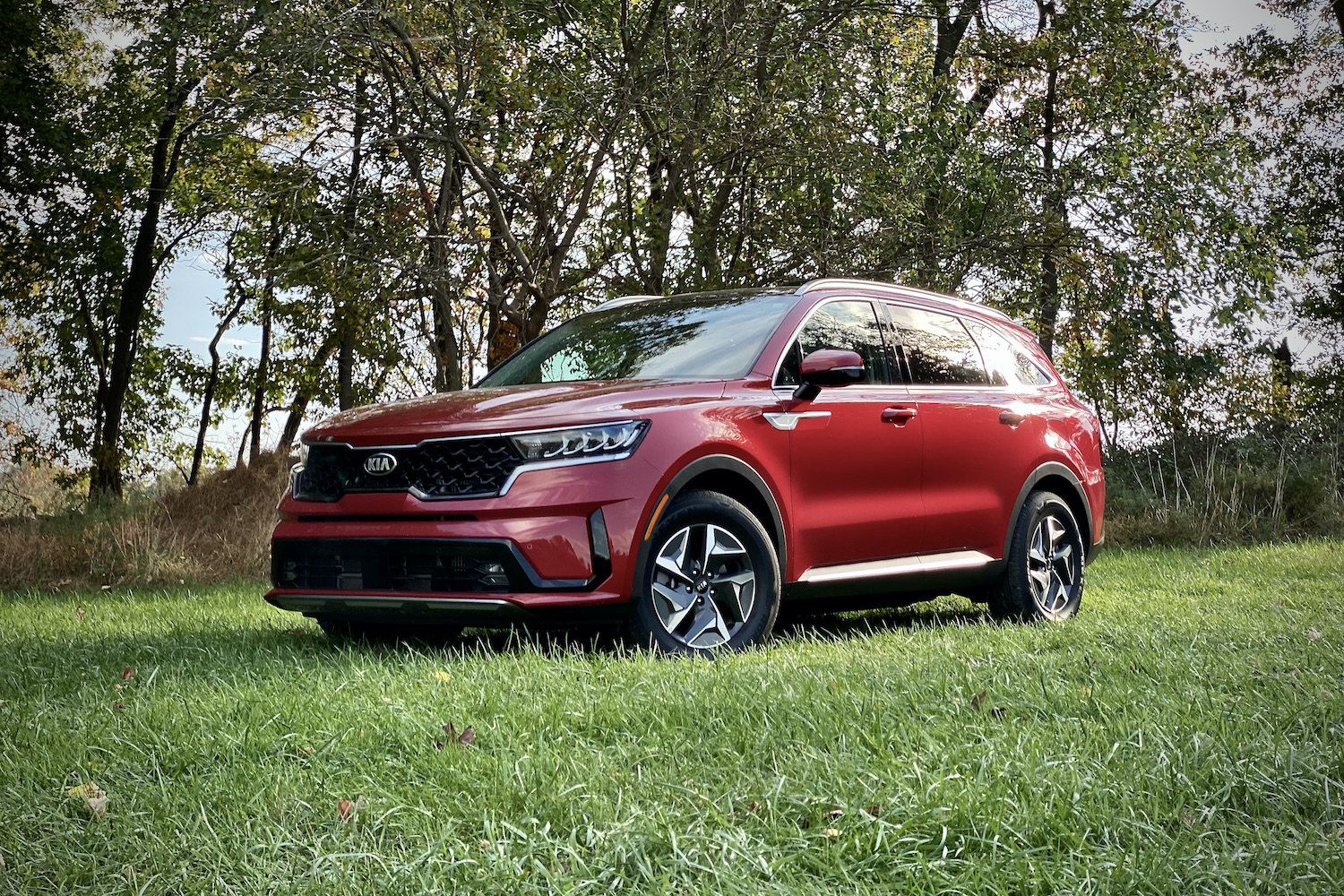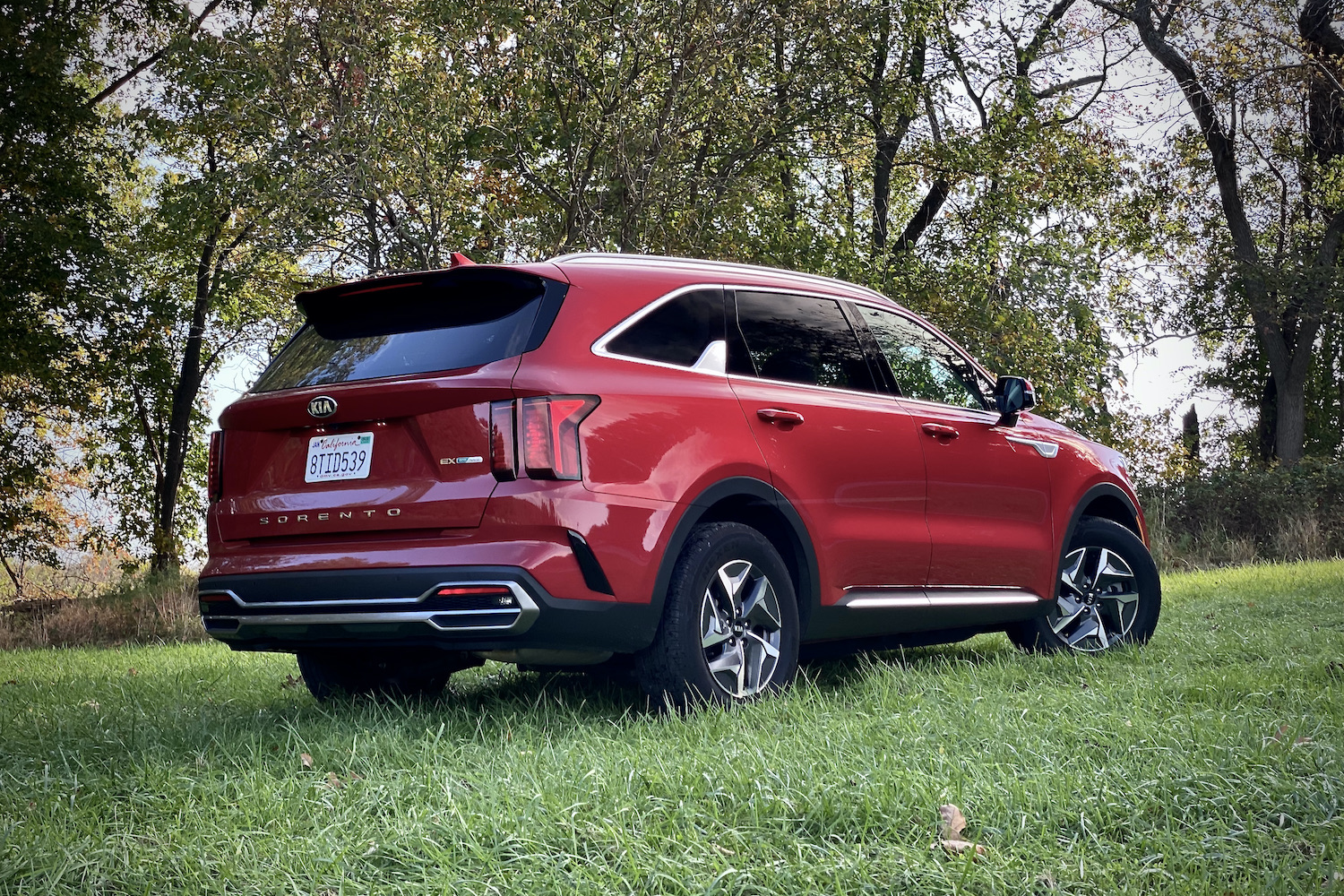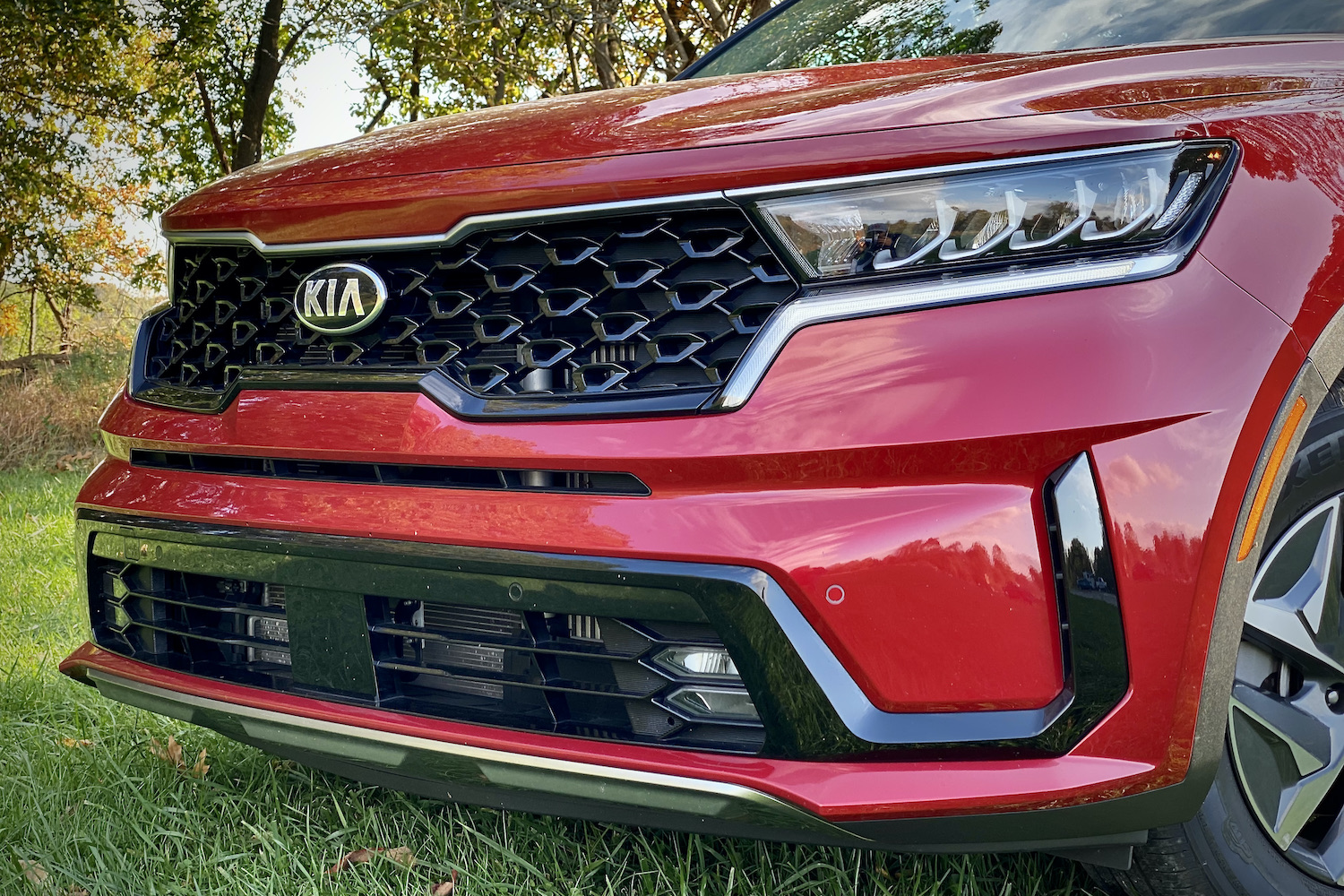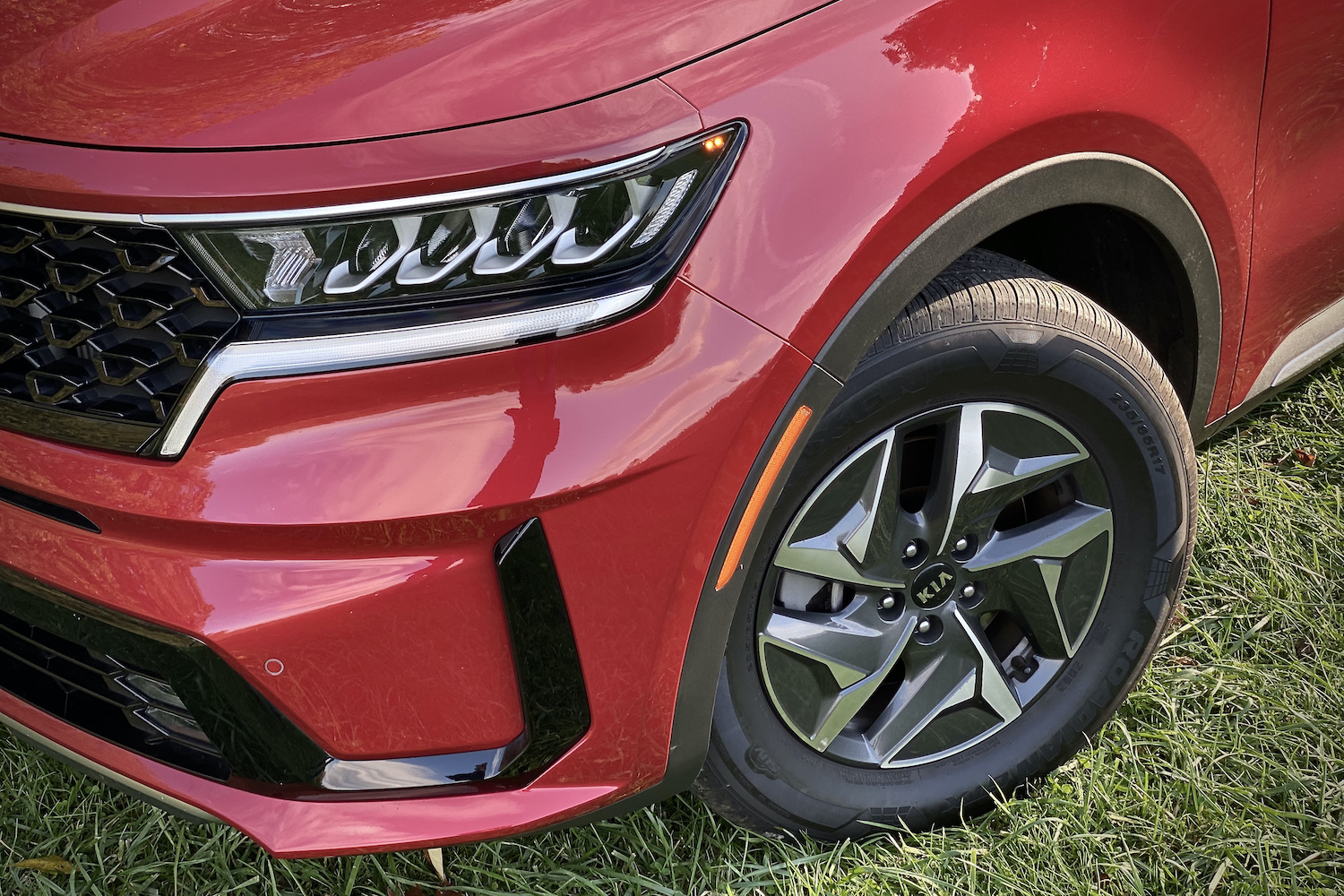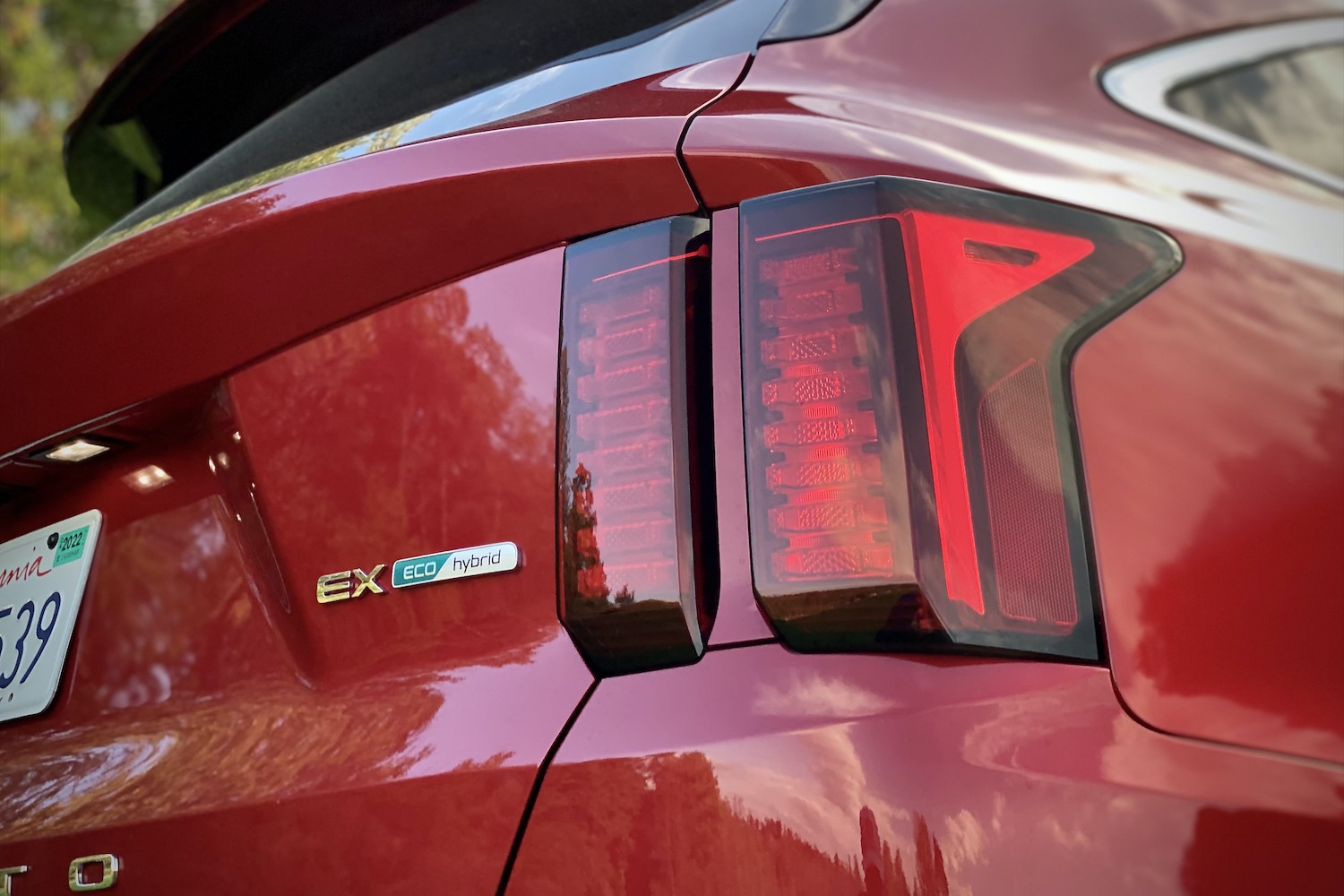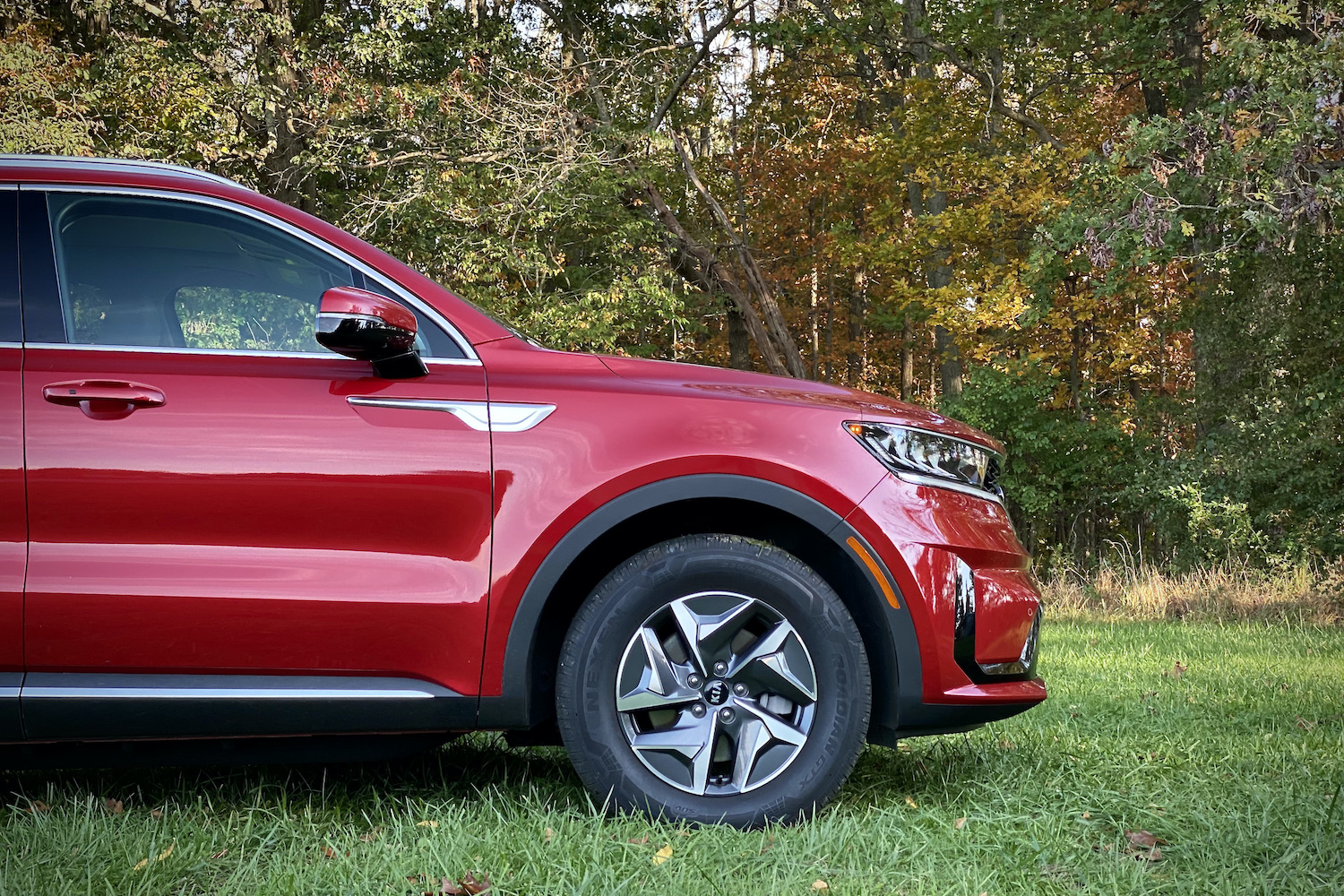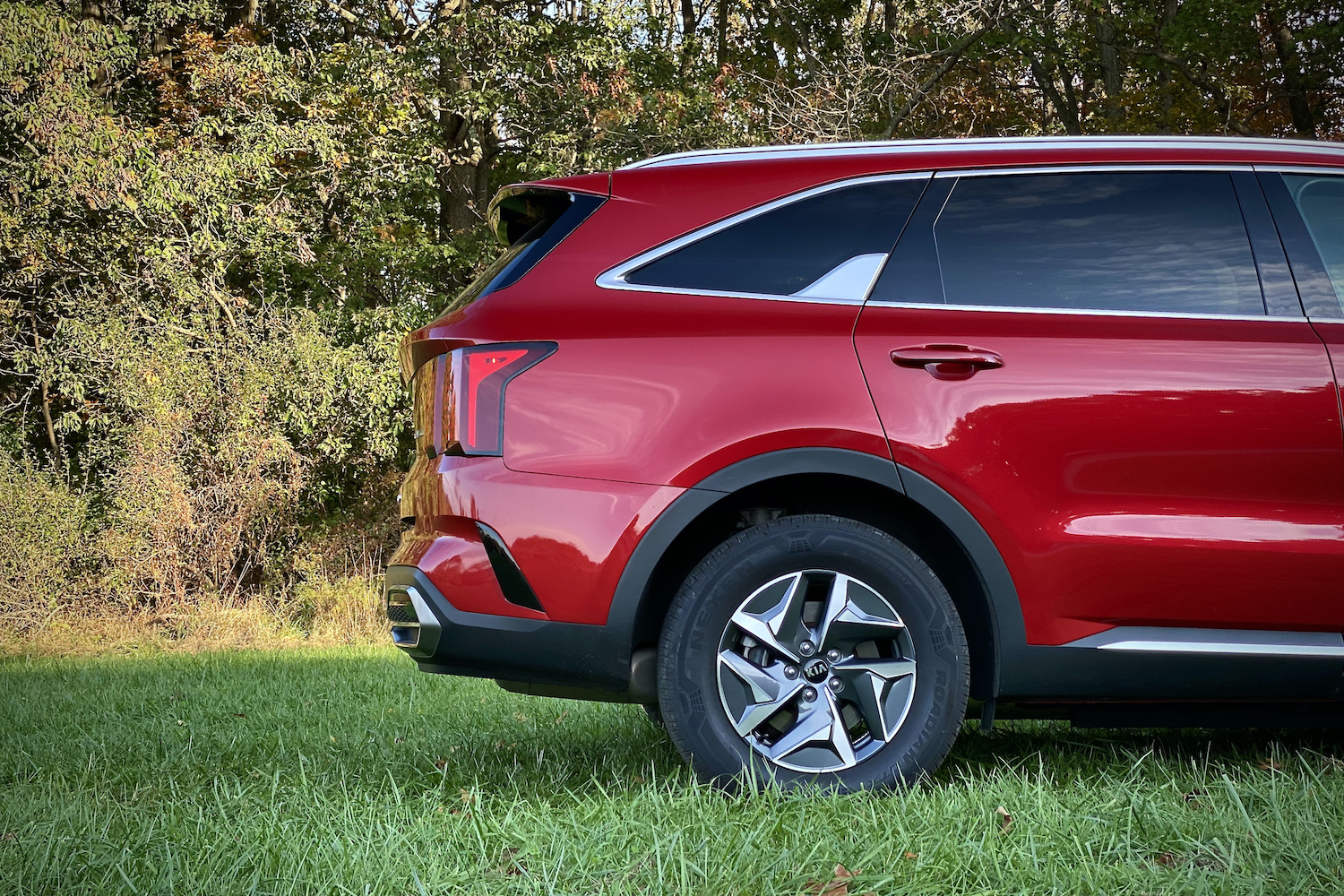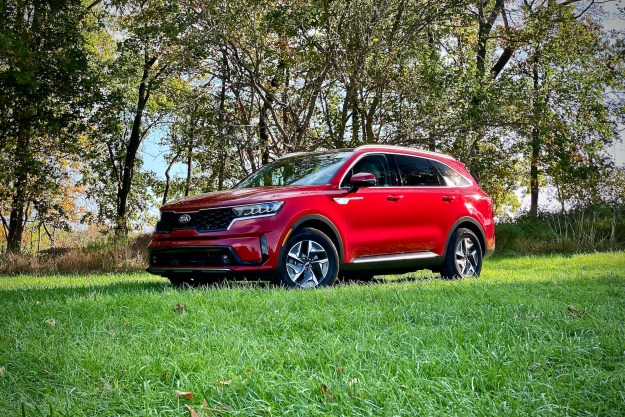
- Tons of tech
- Classy design
- Compact car MPG
- Roomy first and second rows
- Doesn’t feel slow
- Tight third row
- 2022 model has more features
The three-row, midsize SUV segment is one that automakers have been slow to electrify. It makes sense — these hulking SUVs tend to have boxy designs that aren’t efficient to begin with. Finding a way to improve fuel economy without sacrificing all that space is asking a lot — that might be why there are only a few options to choose from.
With the all-new 2021 Sorento Hybrid, Kia found a way to make it work. The Sorento name has been around since 2002, but this is the first time you’ll find a hybrid powertrain in the SUV. This powertrain not only helps the Sorento carve out its own place in Kia’s lineup, but also in the overall segment. If you’re looking for a midsize SUV with a hybrid engine, you’ll want to head straight to a Kia dealership to check out the Sorento Hybrid before anything else.
The entry-level S trim starts at $34,760, including the $1,170 destination fee. The EX trim, which is the one we tested, starts at $37,760. Our tester was finished in Runaway Red Paint that costs $445, bringing the price tag of our tester up to $38,205.
Design and interior
The last Sorento had a frumpy design — not exactly hideous, but ungainly from some angles. In that regard, the new Sorento Hybrid is a massive improvement. It doesn’t have the same road presence as the larger Telluride, but it still has its own type of American swagger. Not many midsize SUVs, and even fewer hybrids, look cool, yet that’s exactly what the Sorento Hybrid manages to do.

Kia’s tiger-nose grille gives the Sorento Hybrid a familial design compared to the automaker’s other SUVs, like the Niro, Seltos, and Telluride. Compared to the regular Sorento, the Sorento Hybrid doesn’t look drastically different. That’s a good thing from our point of view. The only noticeable difference between the two is the shinier trim pieces on the hybrid.
Not many midsize SUVs, and even fewer hybrids, look cool, yet that’s exactly what the Sorento Hybrid manages to do.
The Sorento Hybrid’s interior design is just as handsome as its exterior with a stylish look that feels every bit as upscale as the exterior. The way the center console rests in the middle of vertically-oriented vents and the toggle switches for the HVAC temperature controls and heated seats make the cabin feel like the cockpit of a plane — that’s also fully functional. The major drawback is the dial-operated transmission shifter that seems like a good thing on paper but not in the real world.
One of the Sorento Hybrid’s main benefits over other hybrids is that it offers seating for up to seven. The combination of a hybrid powertrain and seating for the entire family is something only a few midsize SUVs can claim. Thanks to clever packaging, the Sorento Hybrid offers the same amount of cargo space as the Sorento. Unfortunately, it’s not as spacious as its rivals. Behind the third row, there is 12.6 cubic feet of cargo space. Folding the rear seats down results in 45 cubic feet of cargo space, while the most the Sorento Hybrid can hold is up to 75.5 cubic feet of cargo.
Tech, infotainment, and driver assist
The largest demerit facing the Sorento Hybrid is its infotainment system. Kia doesn’t fit the Sorento Hybrid with the same available 10.25-inch touchscreen on the regular model. Instead, you get a standard 8-inch unit across the lineup. It’s not a bad touchscreen, but seeing the extra real estate available in a regular Sorento leads to envy. It’s like looking at your neighbor’s yard and then coming to the realization that yours doesn’t quite add up. For patient people, Kia has made things equal for 2022.
It’s not the fanciest list of features, but there’s something comforting about a car that comes with easy-to-use tech.

The size of the touchscreen may not impress, but its features will. The EX trim we tested came with wireless Android Auto and Apple CarPlay, satellite radio, a 4.2-inch display in the instrument cluster, eight USB ports, a wireless charging pad, and six audio speakers. It’s not the most illustrious list of features, but there’s something to be said about having a car that doesn’t suffocate you with technology.
The touchscreen’s graphics aren’t as crisp or as colorful as the ones found on the larger 10.25-inch touchscreen, but they’re still really good. It’s also nice to get to use buttons and dials that are placed logically. Someone could get into this car and get comfortable with it in a matter of 10 minutes — that isn’t the case with many new vehicles.
Kia packs the Sorento Hybrid with its Drive Wise suite of advanced safety features. The suite includes forward-collision warning, automatic emergency braking, lane departure warning, lane-keeping assist, blind-spot monitoring, traffic sign recognition, pedestrian detection, rear cross-traffic alert, vehicle exit warning, and rear parking sensors. The EX trim adds adaptive cruise control, cyclist detection, intersection assist, and front parking sensors.
Driving experience
Power for the Sorento Hybrid comes from a turbocharged 1.6-liter four-cylinder engine that’s paired with one electric motor and a 1.5-kWh lithium-ion battery pack. Combined output is rated at 227 horsepower, while a traditional six-speed automatic transmission handles shifts. It’s a change from the norm, as the majority of other hybrids utilize a continuously variable automatic transmission (CVT). If there’s a downside with the Sorento Hybrid’s powertrain, it’s that front-wheel drive is the only available configuration.
Compared to rivals from Ford and Toyota, the Sorento Hybrid is down on power. The Ford Explorer Hybrid features a 3.3-liter V6 engine and an electric motor for a combined 318 horsepower. Toyota’s Highlander Hybrid, in comparison, comes with a 2.5-liter four-cylinder and two electric motors that produce 243 horsepower. Against that crowd, the Sorento Hybrid sounds like it could use some extra punch, but the SUV feels plenty powerful. There’s a little lag off the line, but it’s still peppy, only being about a second off of the regular Sorento’s available turbocharged 2.5-liter four-cylinder engine in a sprint to 60 mph. Passing on the highway, which is usually a test of patience in a hybrid, is uneventful.
The six-speed automatic transmission is smoother than options with a CVT, like the Highlander, but it’s not exactly trouble-free. In our week with the SUV, we found that it stuttered a few times when switching between reverse and drive. Downshifts can be slow when trying to rush them by using the shift paddles on the steering wheel, but that’s to be expected with a powertrain that puts fuel economy first.
Out of the few hybrid midsize SUVs on the market, the Sorento Hybrid is the most efficient one of the bunch.

While Kia’s drive modes usually result in a noticeable change, the Sorento Hybrid’s Comfort, Smart, and Sport modes don’t make any radical changes to the way the SUV performs. So, keeping it in Eco mode for the majority of the time makes plenty of sense. Additionally, Kia’s Eco mode doesn’t nuke the responsiveness of the throttle pedal, making it feel more like a normal drive mode. Eco mode also matches the Sorento Hybrid’s compliant ride and light steering for a relaxed driving experience.
Gas mileage and safety
Out of the few three-row midsize SUVs on the market with a hybrid powertrain, the Sorento Hybrid is the most efficient one of the bunch. The hybrid is rated to get up to 37 mpg combined (39 mpg city, 35 mpg highway). The best the Toyota Highlander Hybrid can get is 36 mpg combined, while the Ford Explorer Hybrid has a paltry 28 mpg combined rating. The Sorento Hybrid is so efficient, it nearly matches smaller hybrids like the Honda CR-V Hybrid and Hyundai Tucson Hybrid Blue that have 38 mpg combined ratings.

The Insurance Institute for Highway Safety (IIHS) has not crash-tested the 2021 Sorento Hybrid yet. Though, the regular Sorento received a “Top Safety Pick” rating after earning “Good” scores in all six crash tests — a score of “Superior” for its front crash prevention technology and having headlights ranging from “Poor” to “Good.” In the National Highway Traffic Safety Administration’s (NHTSA) testing, the 2021 Sorento Hybrid earned a four-star overall safety rating.
Kia backs the Sorento Hybrid with a five-year, 60,000-mile basic warranty and a 10-year, 100,000-mile powertrain warranty. The warranty beats the ones that Toyota and Ford offer, which includes a three-year, 36,000-mile basic warranty and a five-year, 60,000-mile powertrain warranty.
How DT would configure this car
Skip the $3,000 EX trim, which doesn’t justify its price tag. The standard Sorento Hybrid comes with an extensive list of safety features, dual-zone climate control, six audio speakers, wireless smartphone compatibility, synthetic leather upholstery, heated front seats, and an 8-inch touchscreen, making it well-equipped for most drivers.
Our take
Class-leading fuel economy is just one quality that makes the Sorento Hybrid an impressive vehicle. It also comes with nifty tech features, a relatively spacious cargo area, a peppy powertrain, and a lengthy warranty. You can’t miss the Sorento Hybrid’s stunning design, either. It’s not even a close comparison — the Sorento Hybrid is one of the best midsize SUVs on sale.
The Toyota Highlander Hybrid is available with a larger 12.3-inch touchscreen, though its graphics and menu layout look dated, it can get up to 36 mpg combined, it has up to 84.3 cubic feet of cargo space, it has a 243-horsepower, and it can tow up to 3,500 pounds. The Highlander Hybrid isn’t as stylish as the Sorento Hybrid, but it is available with all-wheel drive.
If fuel economy is what you’re after, the Ford Explorer Hybrid probably won’t fit the bill. It’s rated at up to 28 mpg combined, which is well behind the Sorento Hybrid’s figure. On the flip side, its powertrain produces up to 318 horsepower, well above the Sorento Hybrid. The Explorer Hybrid can also tow the most cargo with a rating of up to 5,000 pounds. When it comes to cargo space, the Explorer Hybrid has the most space with up to 87.8 cubic feet of cargo space. Ford offers the Explorer Hybrid with rear and all-wheel drive.
Should you get one?
Yes. The 2022 model adds more tech and available all-wheel drive, but the 2021 model is still worth buying.

